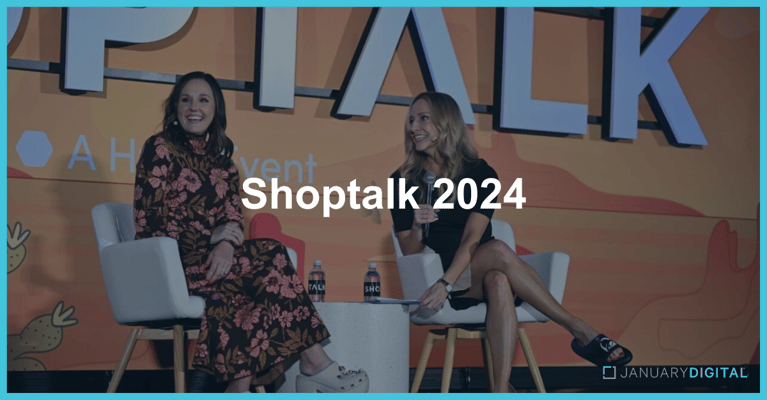In mid-September, over 4,000 retail leaders, tech innovators and CPG brands big and small gathered in Las Vegas to network, learn, share best practices and embrace the future of grocery. Common themes emerged across four days of immersive content, thought-provoking keynotes and innovative track sessions. While retail media, emerging tech solutions and personalization were dominant themes, here are a few others that emerged.
- The rise of non-traditional retailers as primary grocery store
The competition is heating up and it’s not coming from the grocer next door. As the number of local supermarkets is shrinking, dollar stores are seeing massive growth, fueled primarily by consumables. Additionally, big box retailers like Target and Walmart are doubling down on their grocery offerings and investing in making pick-up and delivery a seamless experience. Last but not least, there’s Amazon, whose $1.4 trillion valuation exceeds all major public U.S grocers combined (according to Solomon Partners). The opportunity for traditional grocery brands? Lean in to your heritage and local expertise to defend against non-traditional players.
- Inflation driving behavior shifts
Not surprisingly, US consumers are concerned about everything from the rising cost of utilities to the economic downturn and the rising cost of gas and groceries – and these concerns are impacting their weekly shopping trips. In addition to actively seeking out stores with lower prices, consumers are now more likely to use coupons, stock up during sales and buy store brands. According to Nielsen IQ, private label is pacing at 12% growth vs overall CPG which is at 9%. Nielsen research also reveals that in the next 12 months, consumers plan to spend less on take-out/delivery, dining out and OOH entertainment, creating a strong opportunity for grocers to provide affordable ways to entertain at home.
- Unifying the online/offline experience: the future is omnichannel
A “seamless omnichannel experience” has been a common goal for grocers for years but now enhanced tech, data and insights are making that goal a reality. Recognizing that “every moment has the potential to be shoppable”, grocers are looking holistically at busy shoppers’ lives to make it even easier to create and update orders on the go. As Albertson’s Chief Merchandising Officer noted, we are transacting all day long with multiple retailers and categories so why not grocery? From ADUSA to Whole Foods, brands are increasingly leveraging data to deliver on personalization throughout the customer journey and leveraging technology for inspiration, offers and even to speed a customer’s trip through the store. One thing’s for sure: today’s grocers want shoppers to have a phone in their hands – and will be using it frequently to improve the omnichannel experience with dynamic pricing, relevant messaging special offers.
- Livestreaming is for everyone. Including grocers.
While beauty and fashion have dominated the livestream scene, a recent report from Coresight Research confirms that livestreaming is effective for ALL categories and retailers. In fact, 63% of retail companies who livestream expect more than 10% revenue growth through the channel in the next two years. Live video provides a compelling way for brands and retailers to connect with consumers who tune in primarily to be entertained but also like to find deals and discover new products. Livestreaming allows for a 1:1 conversation in a 1:many platform, driving both community growth and sales, with 52% of US livestream viewers making a purchase. Livestreaming is easy to do; tap into employee experts or passionate influencers on platforms where your brand is already engaging to connect with your customers and give them a compelling reason to tune in on a recurring basis.
- Tech will continue to transform the industry
From Sam’s Club using robots and AI to “help with the minutia of work for associates” to Instacart’s Eversight acquisition that enables agile pricing and promotions, technology was at the forefront of Grocery Shop and will drive both backend efficiencies and consumer-facing benefits. Walmart and Albertson’s are both using voice technology to make it easier for customers to order groceries, alter pickup times and navigate through stores and Instacart share that empowering retailers with technology is an essential element of their strategy. Now is the time for grocers to embrace tech to improve the customer experience and differentiate from the competition.




